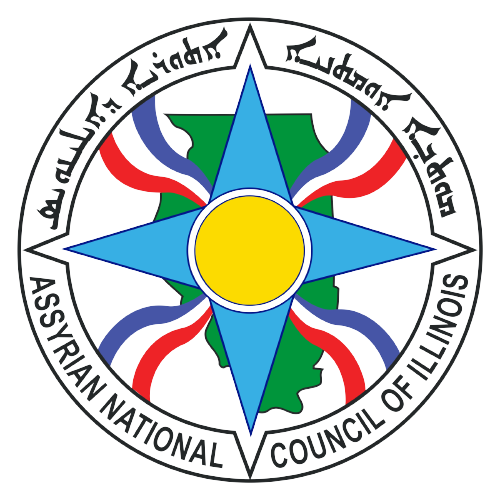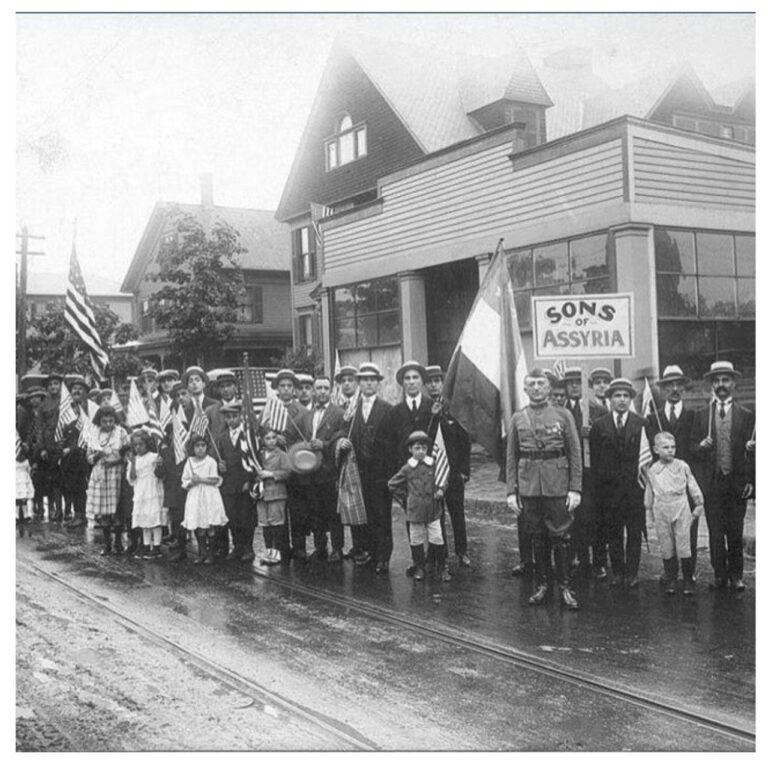Since the turn of the 21st Century, most Assyrians have become diaspora through oppression, migration, and displacement. In this diaspora context, Assyrian community organizations –across North America, Europe, and elsewhere – must begin forming robust, multi-functional institutions that outlive individual personalities and short-term goals.
The personalities that seem to survive the test of time, and the ones we tend to be inspired by, appear to forego individual status and prestige to put their community first. Individuals such as Yusuf Malek and David Perley, both benefitting from and rising through the educational and political structures offered to them by Britain and the U.S., respectively, no doubt possessed great individual talent and ability but chose to fight for what became the losing battle for Assyrian dignity and resettlement in the face of relentless persecution.
Malek authored The British Betrayal of the Assyrians in 1935, exposing terrible policies targeting Assyrians in Iraq in 1933, culminating in the Simele Massacre. This proved to be Malek’s defining work and an important record of Assyrian history. Perley, born two years after Malek to a Syriac Orthodox family in modern-day Turkey, became a founding member of the Assyrian National Federation (now the Assyrian American National Federation) in 1933. Both contributed significantly to establishing a record of what it meant to be an Assyrian in the face of collapsing empires and the birth of the nation-state paradigm.
Perley, reflecting on the Assyrian experience in a newly formed Iraq, wrote in 1943:
“In this settlement of their case, the Assyrians demanded nothing of Iraq. The League of Nations insisted and stipulated that the Assyrians had definite, substantial rights in the region [of Northern Iraq]. Notwithstanding this, Iraq would not permit the Assyrians to form a single community but planned to divide them “into villages of not more than a hundred families each and establish them in barren soil where malaria was rampant” to scatter them throughout the country to destroy their national and spiritual unity.”
Given this policy, Assyrians from all sects were divided by design and incentivized to exaggerate or compound these divisions in the face of any local political dilemmas and policy arbitrations emanating from within Iraqi and European halls of power. In practical terms, this meant that Assyrians were isolated from each other as much as possible regarding state infrastructure, services, bureaucratic definitions, and political bargaining. The very idea of collective nationhood – a thing that was taking shape in the consciousness of newly-founded nation-states and their leaderships across the Middle East – was itself something that was denied to Assyrians.
Thus, the Assyrian nation was not only prevented from collectively adopting a parallel vision alongside Arab and Turkish leaders and their constituents in Iraq and Turkey but was forced to shrink smaller and smaller until all that was left was satellite communities orbiting whatever spheres of power they had found themselves within.
This is an ugly, unkind reading of “community” in an Assyrian context, but a purposeful one to shine a light on a feature of our inheritance as Assyrians everywhere. What we define as a community was tainted from the beginning; it was primarily used as a ghettoizing description of what we were being forced into, not what we were building with our hands.
Assyrians must chart a new path in light of these threads of history that tend to bind us into ever-smaller socio-political circles, partisanship, and ways of thinking. The Assyrian “community” is a worldwide diaspora consisting of many kinetic parts with disparate or converging energies and goals. Organizations like the Assyrian National Council of Illinois (ANCI) and others worldwide must begin a sustained period of activity where they do their best to consolidate these energies into meaningful work that reverses the trajectories of the historical shrink-rays aimed at us.
The Assyrian “community” as defined in decades past, the Assyrian ” community ” was a feeble political construct, a description born from inconvenience and an act of generosity and mercy in response to it, and ultimately an ethnic and religious backwater that served primarily as a cemetery for deserted dreams and ambitions. Now, the Assyrian community is a living thing that is local and global in ways we cannot yet easily categorize and describe, much less utilize and enjoy properly. You only have to look for it and see it in a community event, an outspoken critic, an artist or musician, a youth group, a church function, or a conference.
The biggest mistake Assyrians can make believing that work for the community should be obvious, direct, and sacrificial in nature. It is a misconception because communities built along national, ethnic, and religious lines are mostly strengthened indirectly through individual excellence and a collective willingness to support it.
Many Assyrian thinkers and writers of old had already internalized this idea. However, they were working towards goals particular to a time where new territorial realities still contained the disappearing promise of a reversal of fortunes built on moral arguments—as well as one’s excellence or proficiency to make them convincingly on behalf of everyone else. The excellence of great persuaders was supposed to pave the way for the excellence of tomorrow’s newly restored community. Here, all of this relied on a crucial element of accountability for it to blossom—through record making, lobbying, territorial resettlement, recognitions, and reparations. Where this principle was reserved primarily for others, we must now turn it inward to realize individual and collective potential.
The community is and was only ever a seed – once scattered against “barren soil” by others who wanted it to slowly disappear – but it is now something that can give way to green shoots everywhere we call home. We only have to water it.
Author bio:
Max J. Joseph is a writer and artist currently residing in London, UK. He holds a Bachelor’s in Philosophy and a Master’s in International Public Policy. He has worked with the BBC, VICE, the Institute of Development Studies, and Minority Rights Group International, among other organizations. His writing has appeared in UnHerd, BRICK Magazine, Syria Comment, 1001 Iraqi Thoughts, and more and has been widely quoted elsewhere, including The Independent, The New Arab, and The Catholic Herald.



